 W
WThe Armed Forces Retirement Home refers to one of two facilities, one in Gulfport, Mississippi, the other in Washington, D.C., that house veterans and active duty members of the United States Armed Forces.
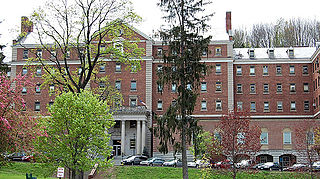 W
WBath VA Medical Center is a U.S. Veterans Administration hospital located in Bath, Steuben County, New York. Affiliated with the University of Rochester School of Medicine, it provides secondary care and operates clinics in Elmira and Wellsville, New York; and Coudersport and Wellsboro, Pennsylvania. It was added to the National Register of Historic Places in 2013, and designated a national historic district.
 W
WThe Beauvoir estate, built in Biloxi, Mississippi, along the Gulf of Mexico, was the post-war home (1876-1889) of the former President of the Confederate States of America, Jefferson Davis. The house and plantation have been designated as a National Historic Landmark, recognized and listed by the U.S. Department of the Interior and its National Park Service.
 W
WConfederate Memorial Park is an Alabama State Park located in Mountain Creek, in rural Chilton County, Alabama, United States. Its address is 437 County Road 63, Marbury, Alabama 36051. It is sometimes found with the same address in Verbena, Alabama 36091.
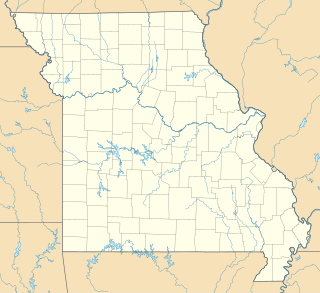 W
WThe Confederate Memorial State Historic Site is a state-owned property occupying approximately 135 acres (55 ha) near Higginsville, Missouri. From 1891 to 1950, the site was used as an old soldiers' home for veterans of the Confederate States Army after the American Civil War. The Missouri state government then took over operation of the site after the last veteran died in 1950, using it as a state park. In 1981, a cottage, a chapel, and the Confederate cemetery were listed on the National Register of Historic Places as the Confederate Chapel, Cemetery and Cottage. The chapel was moved from its original position in 1913, but was returned in 1978. It has a tower and a stained glass window. The cottage is a small wooden building, and the cemetery contains 723 graves. Within the cemetery is a monument erected by the United Daughters of the Confederacy which is modeled on the Lion of Lucerne. In addition to the cemetery and historic structures, the grounds also contain trails, picnic sites, and fishing ponds.
 W
WThe first Atlanta Confederate Soldiers' Home was built in 1890 with the support of Henry W. Grady at a cost of $45,000. Grady proposed the idea first in 1889, and began to raise funds through "subscriptions". Due to lack of funds the home did not open until 1900. It stood at 410 E. United Avenue on the south edge of the Ormewood Park neighborhood of Atlanta, Georgia. In September, 1901 it burned down, shortly after it was occupied. and was rebuilt in 1902 at the same location with support from the Inman family.
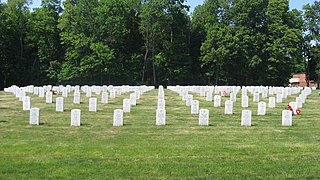 W
WThe Danville Branch, National Home for Disabled Volunteer Soldiers Historic District is the historic campus of a branch of the National Home for Disabled Volunteer Soldiers in Danville, Illinois. The branch, which opened in 1898, was one of eleven branches of the National Home, which formed in 1867 to treat Union soldiers disabled during the Civil War. U.S. Representative and Danville resident Joseph Gurney Cannon used his political influence to establish the Danville Branch, which brought money and jobs to the city. The campus served as both a medical facility and a planned community for the area's veterans, and it included housing, veteran-run shops, community halls, a school and library, and a chapel. Most of these buildings were designed in the Georgian Revival style; however, the library is a Classical Revival building, and the chapel has a Gothic Revival design. The campus also includes the Danville National Cemetery. The buildings remaining on the campus are presently divided between Danville's Veterans Affairs hospital and the Danville Area Community College.
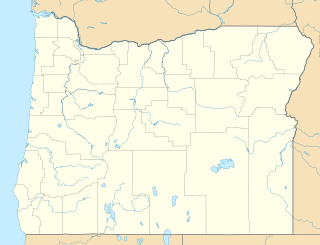 W
WEdward C. Allworth Veterans' Home is a skilled nursing facility on 12 acres in Lebanon, Oregon, with spaces for 154 American veterans. It offers assisted living, rehabilitation services and long-term care, as well as care for dementia and Alzheimer's patients.
 W
WMilwaukee Soldiers Home is one of three Soldiers homes which have survived in the United States. It was built for the rehabilitation of Civil War soldiers. The building recognized as a National Historic Landmark District property. There are a total of 24 other buildings on the grounds which are also part of the Northwestern Branch, National Home for Disabled Volunteer Soldiers Historic District.
 W
WThe Minnesota Soldiers' Home, later known as the Minnesota Veterans Home in Minneapolis, is an old soldiers' home near Minnehaha Falls in Minneapolis, Minnesota.
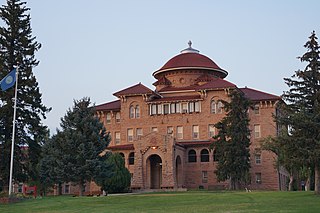 W
WThe National Asylum for Disabled Volunteer Soldiers was established on March 3, 1865, in the United States by Congress to provide care for volunteer soldiers who had been disabled through loss of limb, wounds, disease, or injury during service in the Union forces in the American Civil War. Initially, the Asylum, later called the Home, was planned to have three branches: in the Northeast, in the central area north of the Ohio River, and in what was then considered the Northwest, the present upper Midwest.
 W
WThe Battle Mountain Sanitarium was a division of the National Home for Disabled Volunteer Soldiers (NHDVS) located in Hot Springs, South Dakota. Established by law in 1902 and opened in 1907, it was unique among the facilities of the NHDVS, a precursor of today's United States Department of Veterans Affairs (VA), in that it was strictly a medical facility with no residential components beyond its treatment facilities. It was founded to treat former soldiers suffering from musculo-skeletal problems that were believed to be treatable by the region's mineral springs, and for conditions such as tuberculosis whose treatment was improved by the thin dry air. The facilities built for the sanitarium are in an architecturally distinctive Romanesque and Mission Revival style, and now form the centerpiece of the Black Hills Health Care facility, operated by the VA. Most of the complex site was designated a National Historic Landmark in 2011 for its architecture and history.
 W
WThe National Home for Disabled Volunteer Soldiers, Marion Branch is a historic old soldiers' home located in Marion, Indiana. The hospital, along with Marion National Cemetery were listed on the National Register of Historic Places in 1999 as a national historic district.
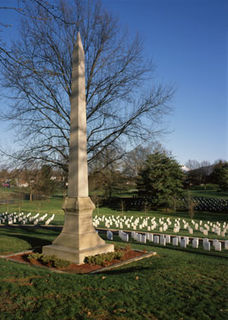 W
WThe Mountain Branch, National Home for Disabled Volunteer Soldiers was an old soldiers' home opened in 1904 in Mountain Home, Johnson City, Tennessee. Its site has since been taken over by the United States Department of Veterans Affairs, and is home to the Mountain Home National Cemetery and the James H. Quillen VA Center. Also known as the Mountain Home, its campus was designated a National Historic Landmark District in 2011, as a well-preserved example of an early 20th-century veterans care facility.
 W
WThe Northwestern Branch, National Home for Disabled Volunteer Soldiers Historic District is a veterans' hospital in Milwaukee, Wisconsin with roots going back to the Civil War. Contributing buildings in the district were constructed from 1867 to 1955, and the 90 acres (36 ha) historic district of the Milwaukee Soldiers Home campus lies within the 400 acres (160 ha) Clement J. Zablocki VA Medical Center grounds, just west of Miller Park.
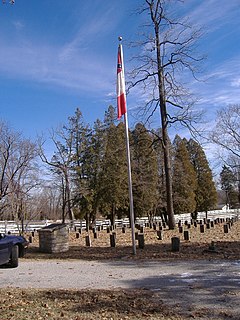 W
WPewee Valley Confederate Cemetery is one mile from the site of the old Kentucky Confederate Home. The cemetery is not only on the National Register of Historic Places, but an individual monument within it, the Confederate Memorial in Pewee Valley, is separately on it as part of the Civil War Monuments of Kentucky MPS. It is the only cemetery for Confederate veterans, 313 in total, that is an official state burying ground in Kentucky.
 W
WThe Philadelphia Naval Asylum is a complex of buildings at Gray's Ferry Avenue in Philadelphia, Pennsylvania. Built in 1827 as a hospital, it later housed the Philadelphia Naval School, served as a home for retired sailors for the United States Navy from 1834 to 1976, and was ultimately redeveloped as luxury condominiums. The site was placed on the National Register of Historic Places and designated a National Historic Landmark in 1971, primarily for its architecture.
 W
WThe Sawtelle Veterans Home was a care home for disabled American veterans in what is today part of the Los Angeles metropolitan area in California in the United States. The Home, formally the Pacific Branch of the National Home for Disabled Volunteer Soldiers, was established in 1887 on 300 acres (1.2 km2) of Rancho San Vicente y Santa Monica lands donated by Senator John P. Jones and Arcadia B. de Baker. The following year, the site grew by an additional 200 acres (0.81 km2); in 1890, 20 acres (0.081 km2) more were appended for use as a veterans' cemetery. With more than 1,000 veterans in residence, a new hospital was erected in 1900. This hospital was replaced in 1927 by the James W. Wadsworth Hospital, now known as the West Los Angeles VA Medical Center.
 W
WThe Soldiers' Home Historic District, a historic Old soldiers' home campus, is located in Columbia Falls, Flathead County, Montana.
 W
WThe Soldiers' Home in Holyoke is a full-service veterans center and hospital located in Holyoke, Massachusetts, which maintains 247 beds in its main nursing facility, and a separate domiciliary care building with 30 full-time residents. The facility provides long-term care and outpatient medical services, as well as dental and social services, and programming and events for veterans. Operated by the Massachusetts Department of Veterans' Services, it is inspected annually by both the state and the United States Department of Veterans' Affairs.
 W
WTogus, formally known as the Togus VA Medical Center, is a facility operated by the United States Department of Veterans Affairs in Chelsea, Maine. The facility was built as a resort hotel, and housed Union veterans of the American Civil War prior to being converted to a veterans hospital. It was the first veterans facility developed by the United States government.
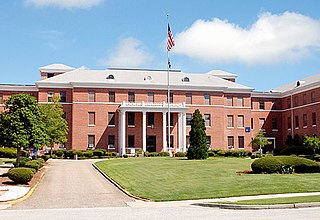 W
WThe Tuskegee Veterans Administration Medical Center began in 1923 as an old soldiers' home in Tuskegee, Alabama. It was originally called the Tuskegee Home, part of the National Home for Disabled Volunteer Soldiers system.
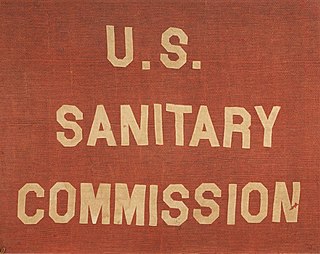 W
WThe United States Sanitary Commission (USSC) was a private relief agency created by federal legislation on June 18, 1861, to support sick and wounded soldiers of the United States Army during the American Civil War. It operated across the North, raised an estimated $25 million in Civil War era revenue and in-kind contributions to support the cause, and enlisted thousands of volunteers. The president was Henry Whitney Bellows, and Frederick Law Olmsted acted as executive secretary. It was modeled on the British Sanitary Commission, set up during the Crimean War (1853-1856), and from the British parliamentary report published after the Indian Rebellion of 1857.
 W
WOrting is a city in Pierce County, Washington, United States. As of the 2010 census, the city's population is 7,983.
 W
WThe Wisconsin Veterans' Home, in King Wisconsin, is an old soldiers' home in Waupaca County, Wisconsin on the scenic Chain O' Lakes, Wisconsin.